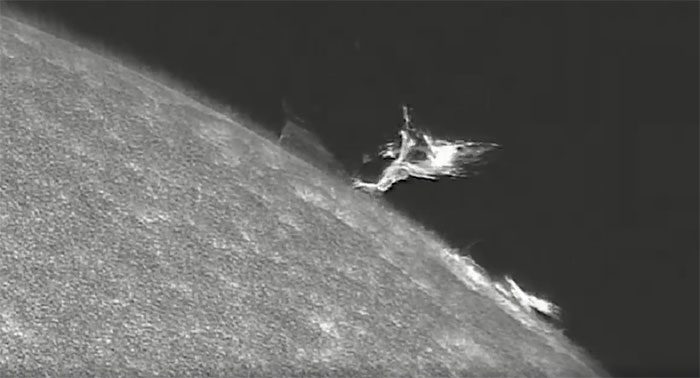An American astrophotographer discovered a massive plasma vortex erupting from the surface of the Sun on June 21, reaching heights of over 19,000 kilometers.
This phenomenon is known as a solar vortex or fire tornado, occurring due to spiral magnetic field structures that develop from the Sun and anchor to its surface at both ends. When a column of plasma shoots up within this structure, it is guided along the spiral magnetic field, causing the plasma to spin and form a vortex.

Massive plasma vortex erupting from the surface of the Sun.
Astrophotographer Apollo Lasky from Naperville, Illinois, captured this rare event on June 21 using a solar telescope from his backyard, according to Space Weather.
Space weather experts estimate that the plasma vortex reaches heights of up to 12,000 miles, equivalent to 19,312 kilometers, large enough to “swallow” our planet if it were to come closer.
Space Weather further noted that this solar storm system does not eject material toward Earth. Instead, most of the plasma falls back to the Sun after the violent vortex.
The Sun has entered the most active phase of its 11-year cycle, which began in 2019 and is expected to peak in 2025. This is accompanied by an increase in solar flares and significant plasma releases along with the associated magnetic fields from the solar corona.
On June 21, the National Oceanic and Atmospheric Administration (NOAA) also reported the discovery of a sunspot nearly three times the size of Earth on the Sun’s surface. The sunspot, named AR3038, has the potential to produce strong flares directed toward our planet, leading to geomagnetic storms that could threaten power grids and artificial satellites.
(Video: Apollo Lasky)


















































